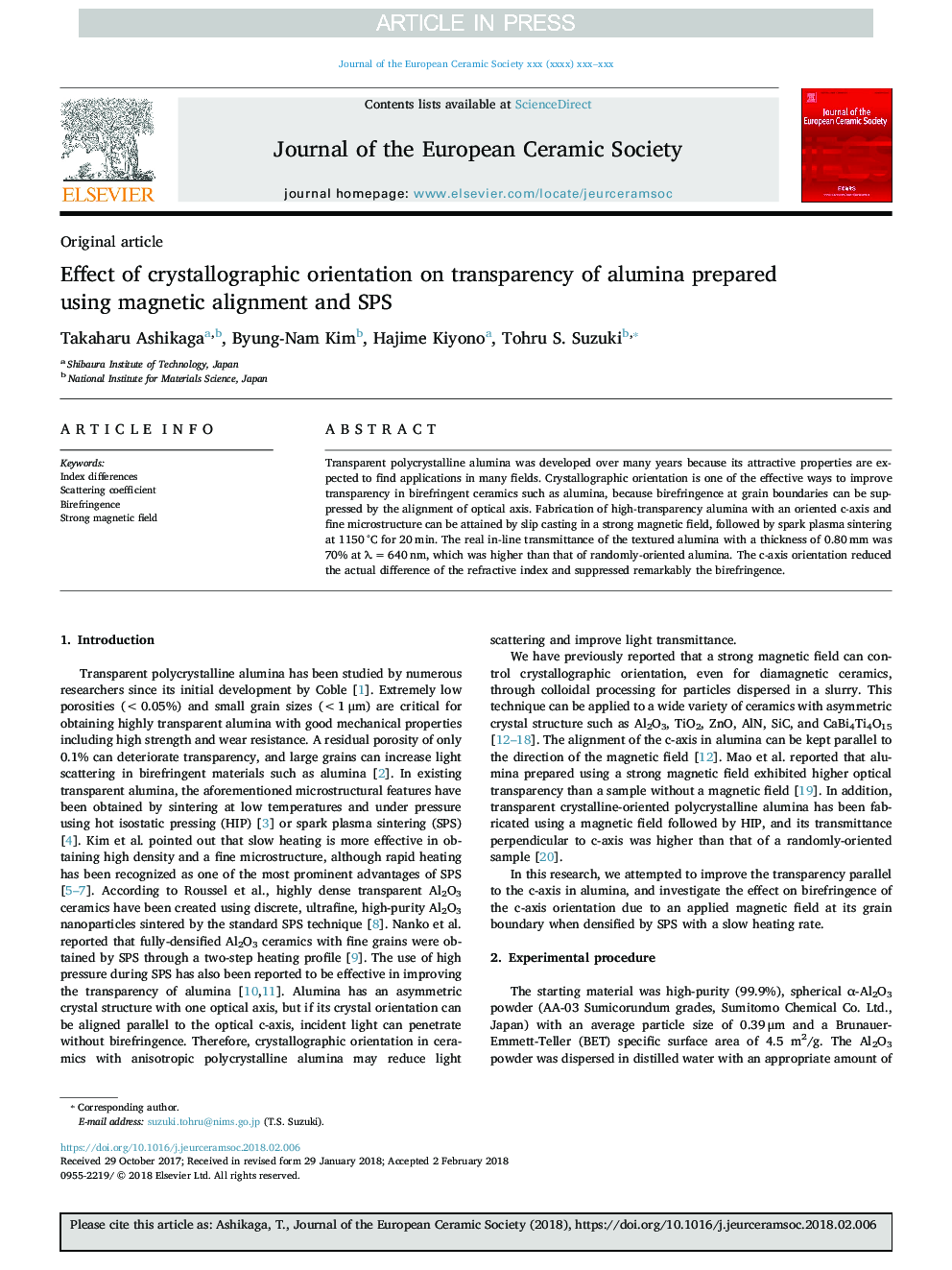| Article ID | Journal | Published Year | Pages | File Type |
|---|---|---|---|---|
| 7898309 | Journal of the European Ceramic Society | 2018 | 7 Pages |
Abstract
Transparent polycrystalline alumina was developed over many years because its attractive properties are expected to find applications in many fields. Crystallographic orientation is one of the effective ways to improve transparency in birefringent ceramics such as alumina, because birefringence at grain boundaries can be suppressed by the alignment of optical axis. Fabrication of high-transparency alumina with an oriented c-axis and fine microstructure can be attained by slip casting in a strong magnetic field, followed by spark plasma sintering at 1150â¯Â°C for 20â¯min. The real in-line transmittance of the textured alumina with a thickness of 0.80â¯mm was 70% at λâ¯=â¯640â¯nm, which was higher than that of randomly-oriented alumina. The c-axis orientation reduced the actual difference of the refractive index and suppressed remarkably the birefringence.
Related Topics
Physical Sciences and Engineering
Materials Science
Ceramics and Composites
Authors
Takaharu Ashikaga, Byung-Nam Kim, Hajime Kiyono, Tohru S. Suzuki,
